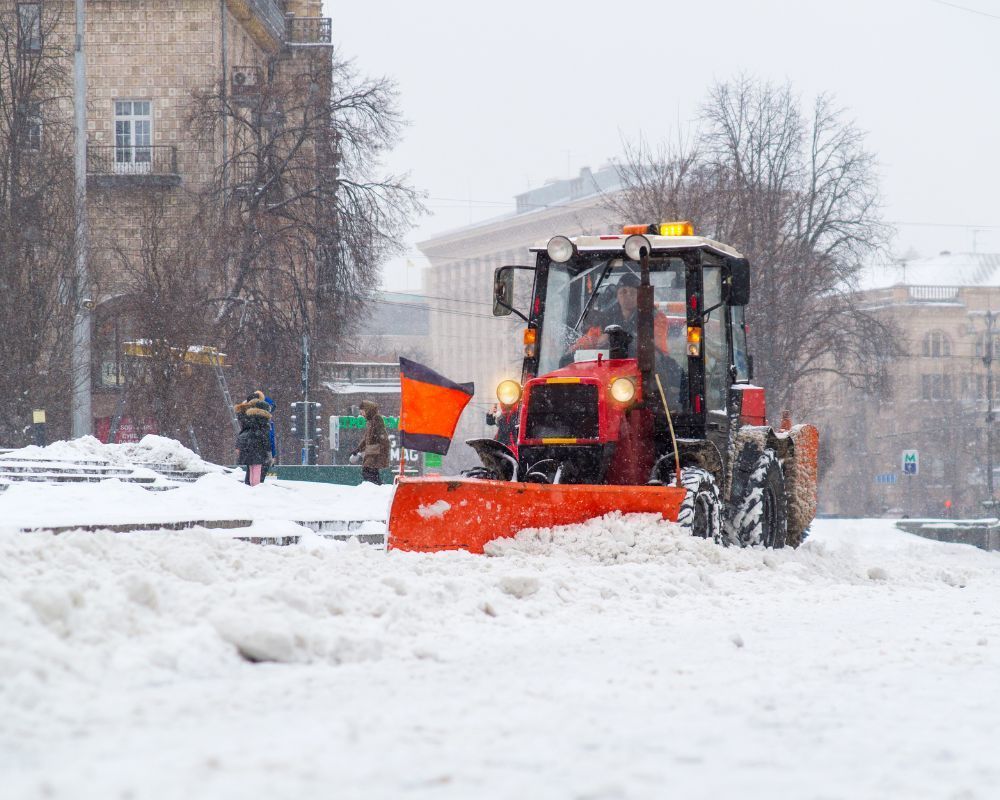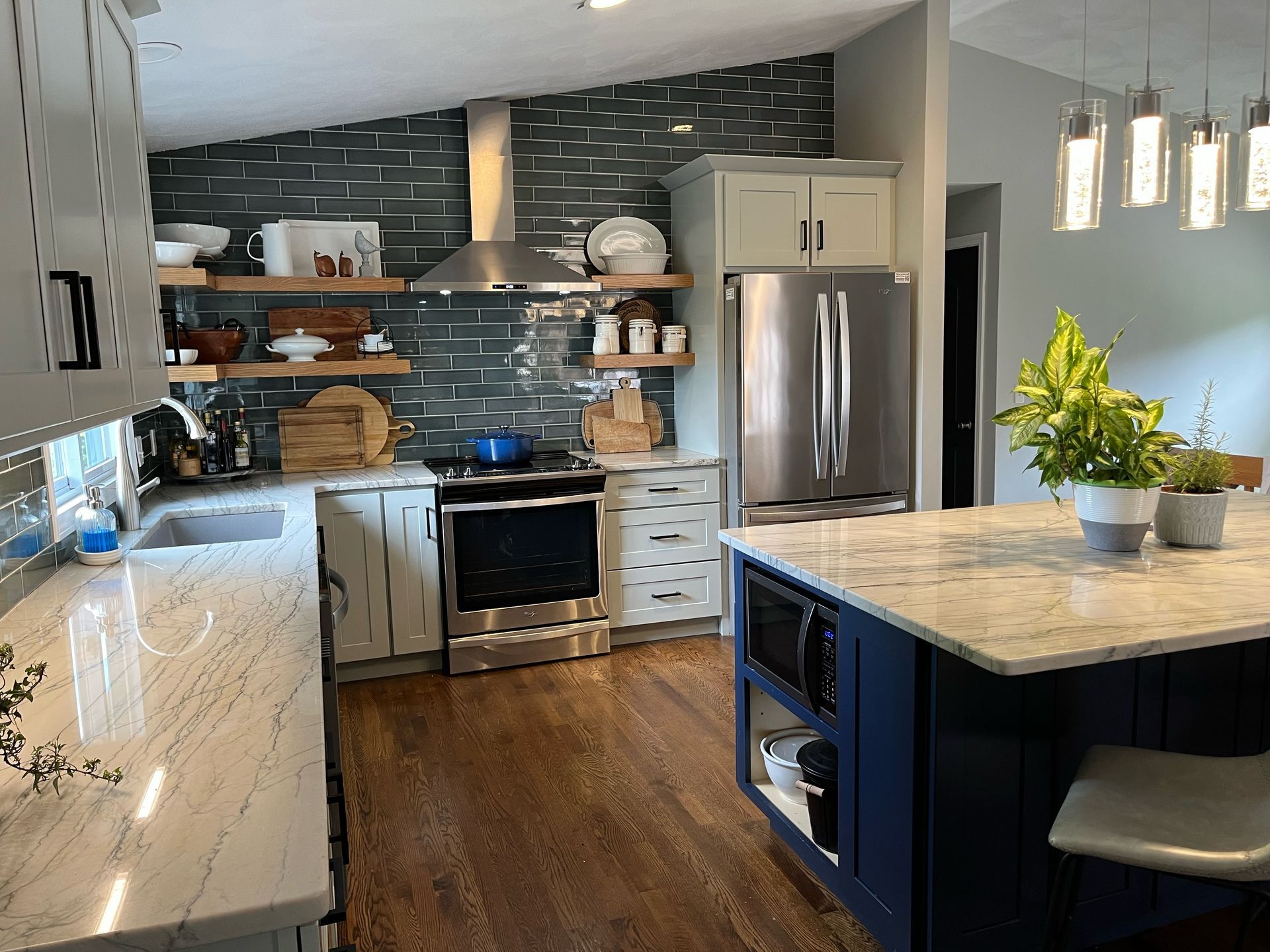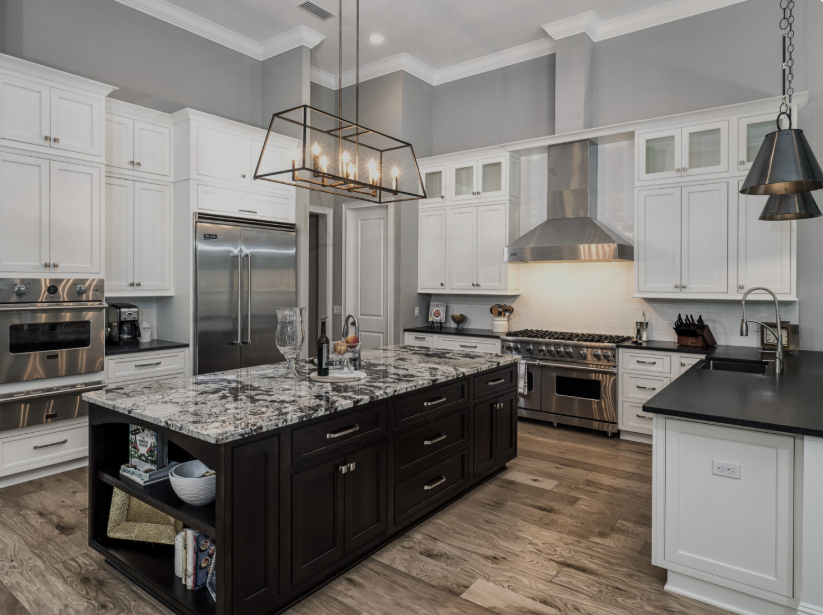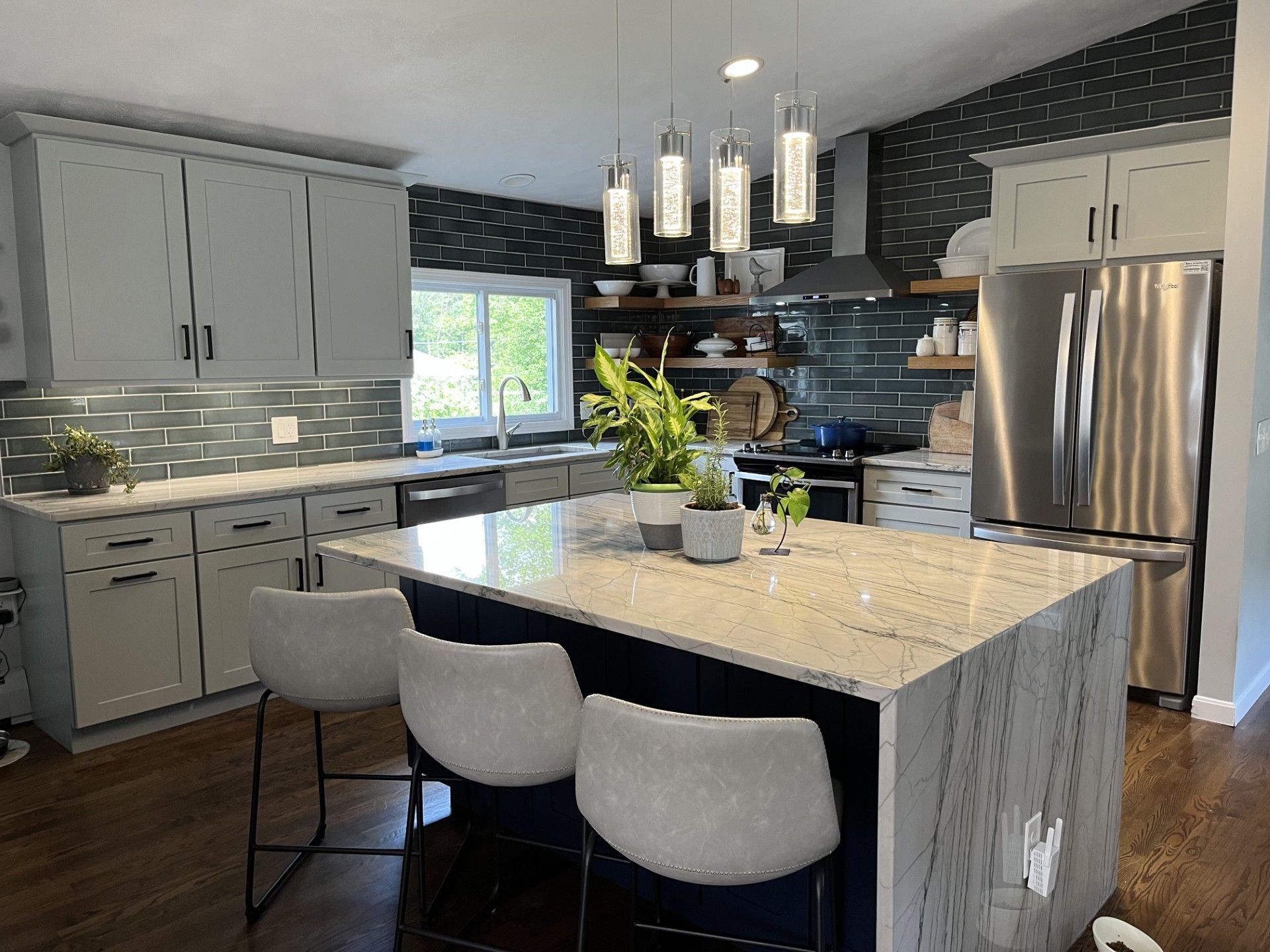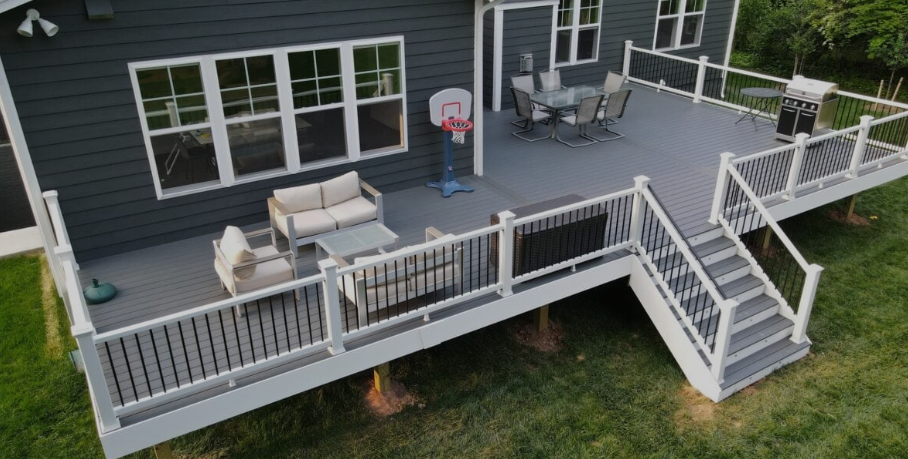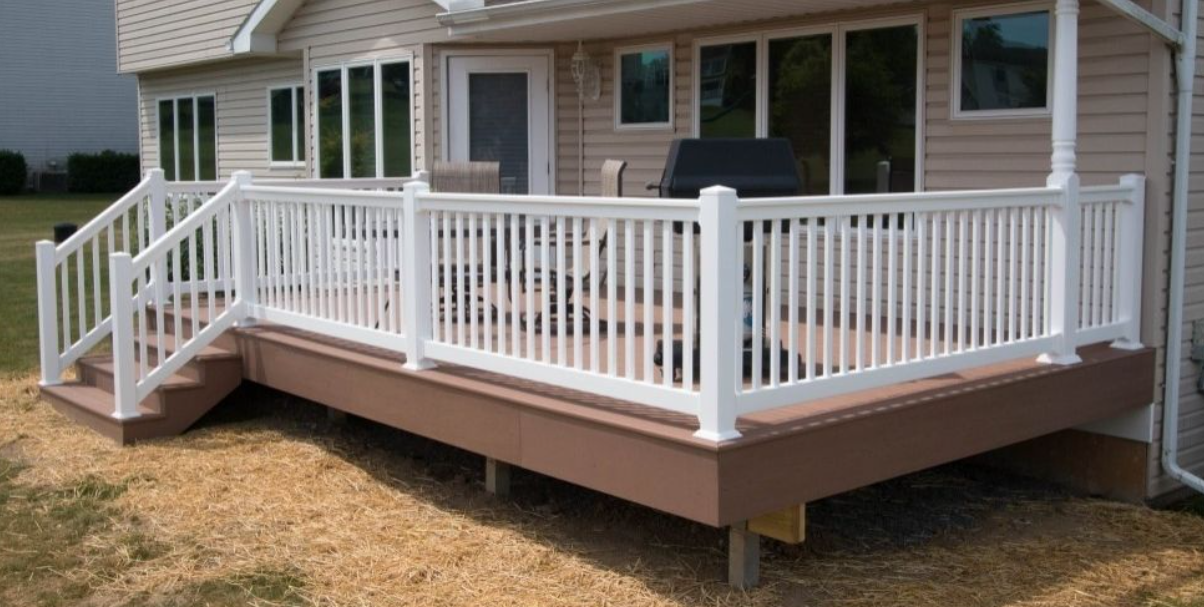How Long Does a Paver Patio Last in Rhode Island?
A properly installed paver patio lasts 25-50 years in Rhode Island, significantly longer than concrete (15-25 years) or wood decking (10-15 years). However, Rhode Island's challenging climate conditions can reduce this lifespan to 15-20 years with poor installation or material selection.
Factors Affecting Paver Patio Lifespan in RI:
- Installation quality: Most critical factor for longevity
- Base preparation: Essential for Rhode Island's clay soils
- Paver material: Concrete vs. natural stone vs. clay brick
- Climate exposure: Coastal salt air vs. inland conditions
- Maintenance level: Annual care extends lifespan significantly
Expected Lifespan by Installation Quality:
- Professional installation with proper base: 25-50 years
- DIY installation with adequate base: 15-25 years
- Poor installation or base: 5-10 years before major repairs needed
Why Rhode Island's Climate Challenges Paver Longevity
Unique Weather Stresses in the Ocean State
Rhode Island's coastal location and variable climate create specific challenges that can significantly impact paver patio durability:
Freeze-Thaw Cycles: Rhode Island experiences an average of 40 freeze-thaw cycles per winter, causing pavers to expand and contract repeatedly. This stress can crack inferior pavers and destabilize poorly installed joints.
High Humidity and Precipitation: With 70% average humidity and 47 inches of annual precipitation, Rhode Island's moisture levels promote:
- Efflorescence (white mineral deposits) on concrete pavers
- Moss and algae growth in joints and on surfaces
- Accelerated weathering of paver surfaces
- Joint sand washout requiring frequent maintenance
Coastal Salt Exposure: Properties within 10 miles of the ocean (most of Rhode Island) face:
- Salt spray corrosion affecting paver surfaces and joints
- Accelerated weathering of concrete and natural stone
- Joint deterioration from salt crystallization
- Metal edging corrosion compromising patio stability
Hurricane and Storm Exposure: Rhode Island's coastal location brings:
- High wind stress that can lift poorly secured pavers
- Flooding and drainage challenges overwhelming inadequate bases
- Debris impact during severe weather events
- Soil saturation leading to base failure and settling
Paver Material Lifespan in Rhode Island Conditions
Concrete Pavers in RI Climate
Expected Lifespan: 20-35 years with proper installation
Performance in Rhode Island:
- Freeze-thaw resistance: Good quality concrete pavers handle RI winters well
- Salt resistance: Varies by manufacturer; some show surface scaling
- Color retention: Fading common after 10-15 years in coastal sun
- Surface wear: High-traffic areas may show wear after 15-20 years
Best Concrete Paver Options for RI:
- Belgard pavers: Proven performance in New England climate
- Unilock pavers: Enhanced freeze-thaw resistance
- EP Henry pavers: Regional manufacturer understanding local conditions
- Tremron pavers: Good warranty coverage for RI installations
Signs of Aging in Concrete Pavers:
- Surface spalling from freeze-thaw damage (years 15-25)
- Color fading from UV exposure (years 10-20)
- Efflorescence appearance (years 5-15, then stabilizes)
- Edge chipping in high-traffic areas (years 20-30)
Natural Stone Pavers in RI Climate
Expected Lifespan: 30-50+ years with proper installation
Bluestone Performance (Popular RI Choice):
- Excellent freeze-thaw resistance: Natural stone handles RI winters
- Salt tolerance: Minimal impact from coastal exposure
- Color stability: Natural variations hide weathering
- Surface durability: Develops attractive patina over time
Granite Paver Performance:
- Superior durability: 40-50+ year lifespan expected
- Excellent weather resistance: Handles all RI climate conditions
- Minimal maintenance: Requires less care than concrete options
- Higher cost: Premium price but exceptional longevity
Flagstone Considerations:
- Variable quality: Lifespan depends on stone source and type
- Thickness matters: Thin flagstone more susceptible to cracking
- Installation critical: Requires expert installation for longevity
- Regional stone: Local Connecticut Valley stone performs well
Clay Brick Pavers in RI Climate
Expected Lifespan: 25-40 years with proper installation
Performance Characteristics:
- Historic compatibility: Complements Rhode Island's colonial architecture
- Freeze-thaw performance: Quality clay brick handles RI conditions
- Color retention: Fired clay maintains color better than concrete
- Surface texture: May become slippery with moss growth in humid conditions
Quality Considerations:
- Manufacturer matters: Specify pavers rated for severe weathering
- Absorption rate: Lower absorption reduces freeze-thaw damage
- Installation complexity: Requires experienced installer for best results
Installation Quality Impact on Lifespan
Professional Installation vs. DIY Longevity
Professional Installation Advantages:
- Proper base depth: 8-12 inches in Rhode Island clay soils vs. 6 inches standard
- Correct materials: Geotextile fabric, proper aggregate selection
- Adequate compaction: 95%+ density prevents settling
- Proper drainage: Essential for RI's high precipitation
- Edge restraint: Prevents lateral movement and joint failure
- Expected lifespan: 25-50 years
DIY Installation Challenges:
- Inadequate base prep: Most common cause of premature failure
- Poor compaction: Leads to settling and uneven surfaces
- Drainage problems: Water retention causes frost damage
- Incorrect materials: Using wrong sand or base materials
- Expected lifespan: 10-20 years before major repairs needed
Base Preparation Impact on Longevity
Proper Base System for RI Conditions:
- Geotextile fabric: Prevents clay soil contamination
- 6+ inches crushed stone: Deep base for clay soil conditions
- Proper compaction: Each lift compacted to specification
- Drainage integration: French drains where needed
- Result: Full 25-50 year lifespan potential
Inadequate Base Consequences:
- Settling and sinking: Appears within 2-5 years
- Uneven surfaces: Safety hazards and accelerated wear
- Water retention: Frost damage and joint failure
- Weed growth: Base contamination allows plant intrusion
- Result: Major repairs needed within 5-15 years
Regional Variations Across Rhode Island
Coastal Areas (Within 5 Miles of Ocean)
Enhanced Challenges:
- Direct salt spray: Accelerates paver surface weathering
- Higher humidity: Promotes moss, algae, and efflorescence
- Storm surge risk: Flooding can undermine patio bases
- Sand infiltration: Coastal storms deposit sand in joints
Lifespan Impact:
- Concrete pavers: 15-25 years (reduced from 20-35)
- Natural stone: 25-40 years (slight reduction)
- Clay brick: 20-30 years (moderate reduction)
Mitigation Strategies:
- Sealed pavers: Annual sealing extends lifespan
- Enhanced drainage: Critical for storm water management
- Regular maintenance: More frequent cleaning and joint care
- Quality materials: Premium pavers justified by harsh conditions
Inland Areas (Providence, Cranston, Warwick)
Primary Challenges:
- Clay soil conditions: Require enhanced base systems
- Urban pollution: May accelerate paver staining
- Limited drainage: Urban development affects water management
- Freeze-thaw stress: Full winter temperature fluctuations
Typical Lifespan:
- Concrete pavers: 20-30 years with proper installation
- Natural stone: 30-45 years
- Clay brick: 25-35 years
Installation Considerations:
- Deep excavation: Clay soil requires 10-12 inch base minimum
- Drainage planning: Urban lots need careful water management
- Access challenges: Equipment limitations in developed areas
Northern Rhode Island (Burrillville, Glocester, Foster)
Climate Advantages:
- Less salt exposure: Inland location reduces coastal stresses
- Lower humidity: Reduced moss and algae issues
- Better drainage: Rural areas often have superior natural drainage
- Less pollution: Cleaner air extends paver appearance
Enhanced Lifespan Potential:
- Concrete pavers: 25-35 years
- Natural stone: 35-50+ years
- Clay brick: 30-40 years
Rural Installation Benefits:
- Equipment access: Easier for proper base preparation
- Drainage options: More flexibility for runoff management
- Material delivery: Lower costs for bulk materials
Maintenance Requirements for Maximum Lifespan
Annual Maintenance Tasks
Spring Maintenance (Critical in Rhode Island):
- Joint sand inspection: Replenish sand washed out by winter precipitation
- Paver leveling: Address any settling from freeze-thaw cycles
- Drainage check: Ensure water flows away from patio properly
- Stain removal: Address winter salt stains and organic deposits
- Weed prevention: Apply pre-emergent treatments to joints
Summer Maintenance:
- Regular cleaning: Pressure washing removes algae and moss buildup
- Joint care: Add polymeric sand for enhanced weed prevention
- Sealing: Apply paver sealer every 2-3 years for concrete pavers
- Stain treatment: Address oil, food, and organic stains promptly
Fall Preparation:
- Leaf removal: Prevent staining from decomposing organic matter
- Final cleaning: Remove summer buildup before winter
- Drainage clearing: Ensure systems ready for winter precipitation
- Joint inspection: Repair any damaged areas before freeze-thaw
Maintenance Impact on Lifespan
Well-Maintained Patios:
- Regular cleaning: Extends appearance and prevents deterioration
- Prompt repairs: Small issues addressed before becoming major problems
- Proper drainage: Prevents water damage and frost issues
- Joint care: Maintains paver stability and prevents weed intrusion
- Result: Achieve full 25-50 year lifespan potential
Neglected Patios:
- Accelerated weathering: Stains and deposits cause permanent damage
- Joint deterioration: Loss of sand leads to paver movement
- Drainage problems: Water retention causes frost damage
- Weed invasion: Roots can crack and displace pavers
- Result: Lifespan reduced to 10-20 years
Signs Your Paver Patio Needs Replacement
Early Warning Signs (Years 10-20)
Surface Issues:
- Color fading: Normal aging but may indicate need for sealing
- Minor settling: Small depressions may require releveling
- Joint sand loss: Regular maintenance issue, not replacement indicator
- Surface staining: Cleaning and sealing may restore appearance
When to Act: These issues typically require maintenance, not replacement
Serious Deterioration Signs (Years 15-30)
Structural Problems:
- Significant settling: Depressions over 1 inch indicate base failure
- Widespread cracking: Multiple cracked pavers suggest freeze-thaw damage
- Edge failure: Perimeter pavers shifting or sinking
- Drainage failure: Standing water indicates base problems
When to Act: These issues may require partial or complete reconstruction
Replacement Indicators (Years 20-40+)
Beyond Repair:
- Extensive cracking: More than 25% of pavers damaged
- Base failure: Widespread settling across patio
- Safety hazards: Uneven surfaces creating trip risks
- Aesthetic decline: Appearance no longer acceptable despite maintenance
Decision Factors:
- Repair costs: If repairs exceed 60% of replacement cost
- Future plans: Consider home sale or major renovations
- Technology improvements: New paver options may offer better performance
Extending Paver Patio Lifespan in Rhode Island
Installation Best Practices
Foundation Excellence:
- Proper excavation: Minimum 10-12 inches in clay soil
- Quality materials: Use specified aggregates and sand types
- Professional compaction: Achieve 95%+ density at each level
- Drainage integration: Plan for Rhode Island's precipitation levels
Material Selection:
- Climate-appropriate pavers: Choose materials rated for severe weathering
- Quality over price: Premium pavers justified by RI conditions
- Local compatibility: Consider architectural harmony with surroundings
- Warranty coverage: Select manufacturers offering regional support
Long-Term Care Strategies
Preventive Maintenance:
- Regular inspection: Monthly walks to identify developing issues
- Prompt repairs: Address small problems before they spread
- Seasonal preparation: Prepare patio for RI's challenging seasons
- Professional assessment: Annual inspection by qualified contractor
Enhancement Options:
- Paver sealing: Protects concrete pavers from staining and weathering
- Joint stabilization: Polymeric sand reduces maintenance needs
- Drainage improvements: Add French drains or improve slopes
- Edge reinforcement: Strengthen perimeter restraints over time
Technology and Material Advances
Modern Paver Improvements:
- Enhanced freeze-thaw resistance: New concrete formulations
- Improved color retention: UV-resistant pigments and surface treatments
- Better joint systems: Advanced polymeric sands and stabilizers
- Permeable options: Allowing water infiltration while maintaining strength
Installation Technology:
- Laser grading: Precision installation for optimal drainage
- Mechanical compaction: Better density achievement than manual methods
- Geosynthetic reinforcement: Enhanced base stability in challenging soils
- Drainage integration: Modern systems handle RI precipitation more effectively
Cost-Benefit Analysis of Quality Installation
Initial Investment vs. Lifespan
Budget Installation ($8-12 per sq ft):
- Expected lifespan: 10-15 years
- Maintenance costs: Higher due to frequent repairs
- Replacement frequency: May need replacement 2-3 times in 50 years
- Total 50-year cost: $24-36 per sq ft
Quality Professional Installation ($15-25 per sq ft):
- Expected lifespan: 25-40 years
- Maintenance costs: Lower due to proper installation
- Replacement frequency: May need replacement once in 50 years
- Total 50-year cost: $20-35 per sq ft
Premium Installation ($20-35 per sq ft):
- Expected lifespan: 30-50+ years
- Maintenance costs: Minimal with quality materials
- Replacement frequency: May last 50+ years
- Total 50-year cost: $20-35 per sq ft
Value Protection Considerations
Property Value Impact:
- Quality installation: Adds 60-80% of cost to home value
- Poor installation: May reduce property value due to appearance issues
- Maintenance level: Well-maintained patios retain value better
- Market appeal: Quality outdoor spaces increasingly important to buyers
Insurance and Liability:
- Professional installation: Typically includes liability coverage
- Warranty protection: Quality contractors offer workmanship guarantees
- Safety considerations: Proper installation reduces slip and trip hazards
- Code compliance: Professional work meets municipal requirements
Municipality-Specific Considerations
Providence County Requirements
Urban Challenges:
- Permit requirements: Large patios may require building permits
- Drainage regulations: Must not impact neighboring properties
- Historic districts: Federal Hill, Benefit Street areas have design restrictions
- Utility considerations: High density of underground services
Lifespan Factors:
- Pollution exposure: Urban air quality may accelerate weathering
- Limited maintenance access: Tight lots complicate equipment access
- Neighbor considerations: Shared drainage and runoff management
Newport County Considerations
Coastal Exposure:
- Salt air: Direct ocean exposure accelerates weathering
- Historic preservation: Many areas require design approvals
- Tourism impact: High visibility areas need premium appearance
- Hurricane preparation: Enhanced anchoring and drainage required
Installation Requirements:
- Marine-grade materials: Consider salt-resistant options
- Enhanced drainage: Storm surge and heavy precipitation planning
- Wind resistance: Proper edge restraint critical for coastal exposure
Washington County Variations
Mixed Conditions:
- Coastal areas: Similar challenges to Newport County
- Inland areas: Better conditions but still require proper installation
- Rural properties: More flexibility for drainage and access
- Seasonal considerations: Summer home usage patterns
For Rhode Island homeowners considering a paver patio,
Rockhouse Construction brings the local expertise and proven techniques needed to maximize your investment's lifespan. Our team understands the specific challenges of the Ocean State's climate and soil conditions, from Providence's clay soils to coastal communities' salt exposure. We use only quality materials and proven installation methods designed to deliver decades of reliable performance in Rhode Island's demanding environment. From proper base preparation through final installation and ongoing maintenance guidance, we ensure your paver patio will provide lasting beauty and value for your property.
Contact Rockhouse Construction today to discuss your paver patio project and discover how professional installation can maximize your investment's lifespan in Rhode Island's challenging conditions.
